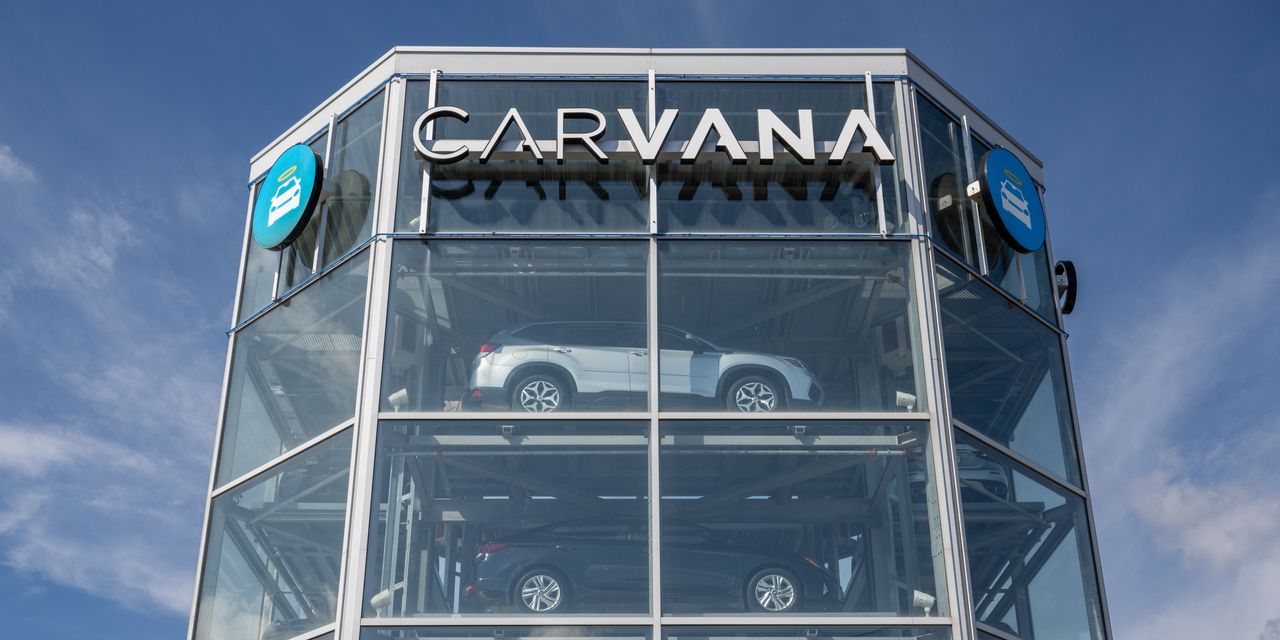Shares of
Carvana
were on fire, up again today after the online seller of used cars turned in higher earnings than expected. The stock started the year at less than $5 and now costs more than $55, giving investors reason to wonder what’s going on, and whether it can last.
Carvana (ticker: CVNA) shares closed 40% higher at $55.80 on Wednesday, while the
S&P 500
and
Nasdaq Composite
eked out small gains.
A somewhat brighter financial picture is part of the puzzle. Carvana reported a per-share loss of about $1.11 for the second quarter, while Wall Street was looking for a loss of $1.13. Earnings before interest, taxes, depreciation, and amortization beat expectations by a wider margin.
On June 8, Carvana told investors to expect Ebitda of more than $50 million for the second quarter, according to Gordon Haskett analyst Don Bilson, while the actual number came in at $155 million, or about $85 million net of $70 million in nonrecurring benefits. The “number is pretty respectable given where expectations were,” wrote Bilson.
Equally positive is that Carvana also said it reached an agreement with its lenders that eliminated most of the debt it was due to repay in 2025 and 2027. That means more financial flexibility, but the company is still losing money and the long-term outlook hasn’t shifted much.
For 2024, sales are expected to be $11.9 billion, down from the $13.1 billion anticipated in April. A decline in used-car prices across the market is partly to blame, but analysts also expect Carvana to sell fewer vehicles. Analyst expect sales of about 377,000 cars and trucks in 2024, compared with about 420,000 a few months back.
Less sales volume means fewer losses—the 2024 loss per share is expected to be $4.87, down from $5.37 a few months ago—but cash is still pouring out the door. Free cash flow in 2024 is expected to be negative $667 million, compared with the negative $642 million expected a few months ago.
The important point is that none of that is enough to explain a stock-price gain of more than 1,000%. Fear of losses is the real point: Short sellers are getting slaughtered.
According to Ihor Dusaniwsky, managing director at S3 Partners, a publisher of short-selling research and statistics, 47.8% of the shares available for trading have been sold short. That amount—40.4 million shares worth $1.6 billion—is huge for a company of Carvana’s size.
The average percentage of shares sold short relative to the amount of stock available to trade for an S&P 500 company is less than 2%.
When anything starts to go better with a heavily shorted stock, it can send prices up a lot as investors rush to close out bets that the shares would fall. “Overall, we’ve seen 13.75 million of short covering in 2023, worth $547 million,” said Dusaniwsky. “Carvana shorts are down $1.54 billion in year-to-date mark-to-market losses in 2023 and down $442 million in July…as of yesterday’s close.”
Even after its enormous move, Carvana stock is still down about 86% from record highs of about $377 set in 2021. The stock could rise further, but it doesn’t look justified based on the valuation.
Wall Street expects Carvana will generate roughly $250 million in positive free cash flow in 2026, leaving the stock trading for about 31 times that amount. The S&P 500 trades for about 22 times estimated 2024 free cash flow.
Barron’s is skeptical the rally will last because short sellers will finish covering their positions eventually, reducing the buying pressure, and because the financial picture is none too bright. Still, we may not be right: Carvana could still pump out more cash sooner than expected.
Investors should stay cautious.
Write to Al Root at [email protected]
Read the full article here




